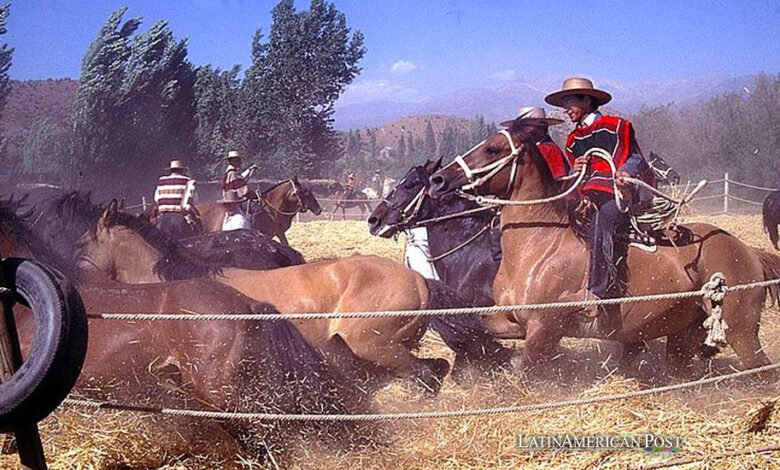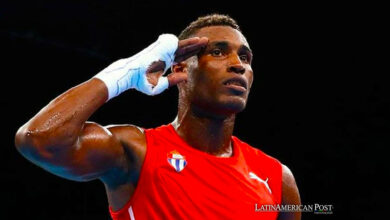The Enduring Legacy of Chilean Rodeo

The Chilean rodeo, a captivating blend of skill, tradition, and community, is a testament to the country’s rich cultural tapestry. This feature delves into the sport’s historical roots, its integral role in Chilean identity, and the balance between modernization and tradition preservation.
Nestled amidst Chile’s majestic Andes and vibrant cities, a unique cultural experience unfolds – the Chilean rodeo. More than just a sport, it’s a captivating tapestry woven from skill, tradition, and an unwavering connection to the land. This feature delves into the fascinating world of Chilean rodeo, exploring its historical roots, its integral role in Chilean identity, and the ongoing efforts to navigate the delicate balance between modernization and tradition preservation.
A Pioneering Past: The Birth of a National Sport
Chilean rodeo boasts a rich heritage that dates back to the 16th century. During the Spanish conquest, the need for herding and branding cattle necessitated the development of skilled horsemen, known as “huasos.” These pioneering individuals honed their skills, laying the foundation for what would evolve into Chilean rodeo. Over centuries, the practice transformed into a competitive sport, gaining national recognition in 1860 with the establishment of standardized rules and the iconic “medialuna” (half-moon) arena. By 1962, Chilean rodeo was officially declared the national sport, solidifying its place as a cherished symbol of Chilean culture.
The Heritage of Huaso: Guardians of Tradition
At the heart of the Chilean rodeo lies the figure of the house, the embodiment of Chilean cowboy culture. Clad in traditional attire – “chapalea” (woolen poncho), “chupalla” (straw hat), and “botas vaqueras” (cowboy boots) – the huaso represents a bygone era, his attire reflecting the nation’s rural heritage and values of resilience and resourcefulness. Beyond the attire, the horses used in rodeo hold immense significance. Bred and trained with meticulous care, they form an inseparable bond with their riders, showcasing exceptional agility and obedience within the confines of the medialuna.
The Arena of Tradition: A Stage for Community and Celebration
A Chilean rodeo unfolds within the confines of the “medialuna,” a half-moon-shaped arena symbolizing the cyclical nature of life and the close connection between humans and the natural world. Here, the “huasos” showcase their equestrian skills and horsemanship in intricate maneuvers. The “carrera a la chilena” (the Chilean race) is the core event. It requires riders to skillfully guide their horses to pin a calf against a padded wall within a designated timeframe. Points are awarded based on technique and teamwork, highlighting the collaborative spirit of the sport.
Life on the Circuit: The Dedication of Rodeo Athletes
Life for contemporary rodeo athletes necessitates unwavering dedication and a deep connection to their horses. They spend countless hours training, honing their reflexes, and forging a strong bond with their equine partners. Beyond physical prowess, athletes face financial challenges, as prize money often falls needs to cover travel expenses. However, their passion for the sport and its cultural significance transcend these difficulties, propelling them to compete with unwavering determination.
Modern Maneuvers: Navigating the Evolving Landscape
As the world evolves, Chilean rodeo faces the challenge of balancing tradition with modernization. Technological advancements have brought a new dimension to the sport, with live streaming and social media facilitating broader accessibility and fan engagement. However, these advancements also spark debates within the community. Concerns regarding the potential dilution of tradition and the commodification of the sport necessitate careful consideration and open dialogue.
Cultural Controversies and Conservation: Striking a Balance
Chilean rodeo is not without its critics. Debates surrounding animal welfare and the limited participation of women in certain aspects of the sport highlight the need for continuous dialogue and adaptation. Initiatives aimed at ensuring the highest standards of animal care and fostering greater inclusivity are crucial steps towards addressing these concerns. Additionally, educational programs and community outreach efforts play a vital role in fostering understanding and appreciation for the cultural significance of rodeo traditions, promoting informed discourse, and fostering a sense of shared responsibility for its future.
A Legacy Enduring
Chilean rodeo is more than just a sport; it’s a cultural tapestry woven from the threads of history, tradition, and a deep connection to the land. As it navigates the complexities of a changing world, the key lies in striking a harmonious balance between preserving its essence and embracing necessary adaptations. By acknowledging and addressing cultural sensitivities while fostering responsible practices and inclusivity, the future of Chilean rodeo remains bright.
Its enduring legacy, a testament to community spirit, cultural pride, and the unwavering connection between humans and animals, promises to continue captivating audiences for future generations. It serves as a reminder that cultural preservation, like the rodeo itself, demands agility and collaboration, ensuring that cherished traditions continue to gallop into the future, enriching not just the lives of those involved but also the nation’s cultural tapestry.





